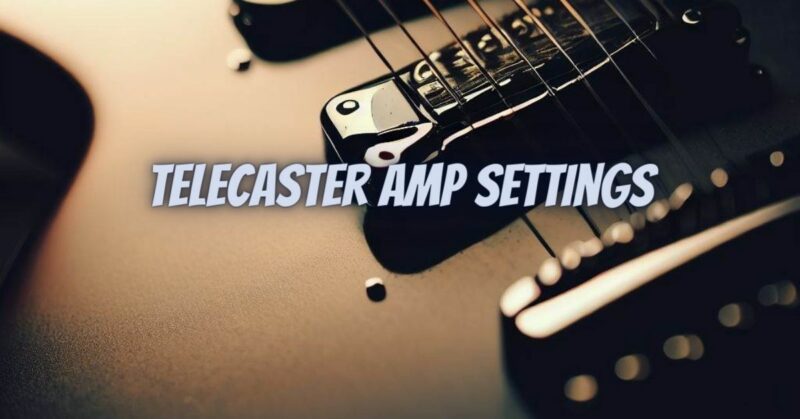The Fender Telecaster is an iconic electric guitar known for its distinct tone and versatility. To make the most of your Telecaster’s sonic potential, it’s essential to understand how to set up your amplifier correctly. In this comprehensive guide, we’ll explore Telecaster amp settings, covering various aspects like EQ, gain, effects, and more, to help you achieve the perfect tone for your playing style and musical genre.
- Clean vs. Dirty Tones:
- Clean Tone: If you’re aiming for a clean, pristine tone often associated with classic country, blues, or jazz, start with your amp’s gain (or overdrive) set to low or completely off. Adjust the volume to your desired level, and use the EQ controls to shape the tone.
- Dirty Tone: For a grittier, overdriven sound commonly found in rock, blues-rock, and alternative genres, increase the gain control on your amp gradually until you reach the desired level of distortion. Use the amp’s EQ to fine-tune the tonal characteristics.
- EQ (Equalization):
- Treble: Adjust the treble control to shape the high-frequency content of your tone. Increasing treble adds brightness and sharpness, while decreasing it results in a warmer, smoother sound.
- Midrange: The midrange control impacts the midrange frequencies, crucial for defining your Telecaster’s voice. Boosting the midrange can make your guitar sound more present and cutting, while cutting it can create a scooped, “vintage” sound.
- Bass: The bass control affects the low-end frequencies. Adjust it to add warmth and depth to your tone. Be cautious not to overdo it, as excessive bass can lead to a muddy sound.
- Volume and Master Volume:
- The volume control on your amp adjusts the overall loudness of your signal. Setting it too low may result in a weak, thin sound, while cranking it too high can cause distortion or even speaker damage. Find a balance that suits your playing environment and musical context.
- If your amp has a master volume control, it allows you to control the overall output level while keeping the preamp gain at your desired level. This is useful for achieving power amp distortion while maintaining control over the overall volume.
- Reverb:
- Reverb adds a sense of space and ambiance to your tone. Adjust the reverb control to your preference, but be mindful not to use excessive reverb, as it can wash out your sound.
- Tremolo:
- If your amp has tremolo (sometimes called vibrato), it modulates the volume of your signal in a rhythmic manner. Adjust the depth and speed controls to add a subtle pulsation or create dramatic wave-like effects, depending on your musical needs.
- Effects Loop:
- If your amplifier features an effects loop, it allows you to insert effects pedals after the preamp stage. This is especially useful for time-based effects like delay and reverb. Experiment with placing your effects in the loop to see how they interact with your tone.
- Experiment and Fine-Tune:
- The settings mentioned above provide a starting point, but your ideal Telecaster tone is a matter of personal preference. Spend time experimenting with different amp settings to discover your unique sound.
- Listen to your amp in the context of the music you’re playing. Adjust settings as needed to cut through the mix or blend in seamlessly with the band.
Dialing in the perfect Telecaster tone through amp settings is a journey of exploration and discovery. Understanding how each control affects your sound allows you to tailor your tone to your playing style and musical genre. Whether you’re after a clean, sparkling tone for country licks or a gritty, overdriven sound for rock solos, your Telecaster and amplifier offer a wide range of sonic possibilities. Don’t be afraid to experiment, fine-tune, and trust your ears as you embark on your quest for the ideal Telecaster tone.

